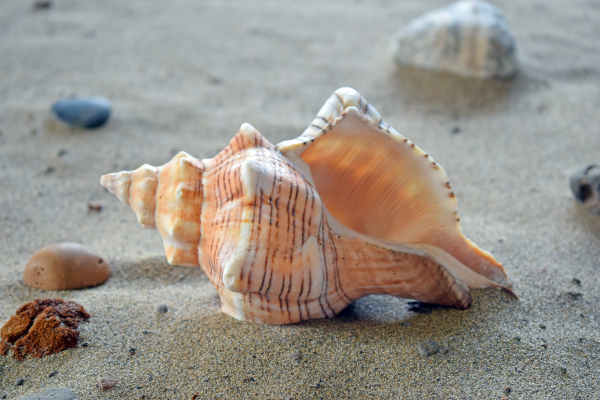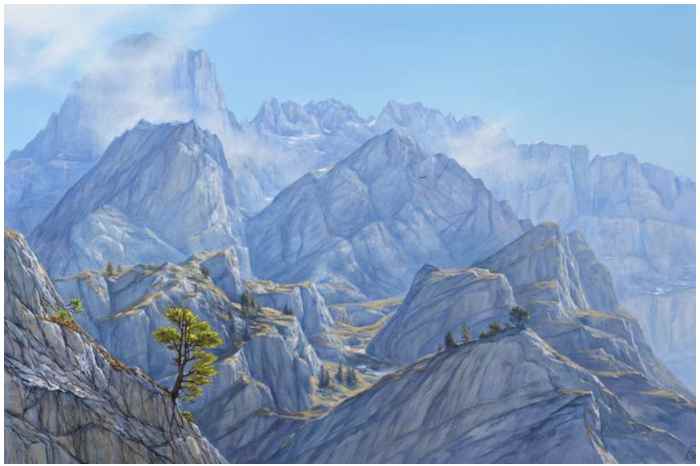The Elements of Art - Meet Your Friends!
Elements of art are full of good ideas for your art! Feeling in a rut? Need some inspiration? Here are seven good friends all ready to lend a hand to get those creative juices flowing again!
 All laid out - ready to start?
All laid out - ready to start?Don't worry, it's happened to us all! Our pencils are sharpened. Canvas primed. Paints set out in nice neat rows and we're ready for action!
But wait!...
First I must have a coffee; make a sandwich; call my friend; and I have to fold the laundry, don't I? Anything will do rather than face that terrifying blank canvas, right?
But fear not - here come those elements of art to the rescue!
We have seven to choose from so which one will take your fancy?
Which art element will make your heart sing?
COLOR
 Color Wheel
Color WheelOh my! What can't you do with the element of color in art!
You like a little drama in your life? Color will do it for you. You'd rather be soothed? Color will do it for you. Need some happiness on a gray day? Color can do that for you too!
I could go on - warm colors, cool colors, primary colors, secondary colors, analogous colors, complementary colors...
We can weave magic with this element!
 ©"City of Old Roofs" Oil on Canvas, by Elizabeth Elkin
©"City of Old Roofs" Oil on Canvas, by Elizabeth ElkinHere's an artist who loves color! Never mind what the 'real' colors were in this view - who cares?!
Elizabeth Elkin's joyful painting, "City of Old Roofs" uses all the complementary colors in one painting! Can you pick them out?
FORM
 Sea-shell left by the tide.
Sea-shell left by the tide.If you love making things look solid and 3-dimensional with your painting or drawing, this is the element for you.
Can you imagine picking up this beautiful shell off the sand, turning it around and just feeling it in your hands?
And what it must feel like for that little sea creature, curling itself round to fit snugly inside the shape.
If this is your chosen element, using your "artist's eyes" you will start to see many inspirational forms which you might have previously overlooked.
Seeing like an artist is liberating - the vital first step before getting anywhere near a pencil or brush!
How to see with the Eye of an Artist
 ©"Dance 3" Oil on Canvas, by Robert McPartland
©"Dance 3" Oil on Canvas, by Robert McPartlandHere's the eye of an artist in action!
Robert McPartland's "Dance 3" has two different forms dancing together - separate but just touching. (Don't miss that lovely bit of red reflected light on the paper!)
There's exciting visual contrast, not only in color, but in the two forms - the natural form of the drying leaf against the pristine form of curling paper.
The painting is far bigger than life-size; 112 x 112 cm (about 45 inches square) so we can imagine the impact on the wall.
TEXTURE
 "Still-life Vase with Twelve Sunflowers" Vincent van Gogh 1889
"Still-life Vase with Twelve Sunflowers" Vincent van Gogh 1889This is one of the famous Van Gogh sunflower paintings with a texture you could definitely feel on the surface of the work - not that you'd be allowed to get within touching distance!
He loved the impasto technique and laying that paint on THICK.
Loading it onto the brush, using the direction of the strokes to express not only the form of the pot, but the wild vibrancy of the plant.
There's nothing delicate about these flowers, they almost jump out of the frame at you!
Like it? Well, give it a go, nobody's watching!
 ©"Ribbonfall" Oil on canvas, Janet Bowler
©"Ribbonfall" Oil on canvas, Janet BowlerOn the other hand you might like the challenge of a realistic still life; do you love painting something silky or shiny; rough, or soft and furry?
With still-life the possibilities are endless. You're The Big Boss, totally in control of the objects on the table - silk ribbons tumbling onto shiny paper suggested to me water falling into a pool.
Of course, there are no textures to be felt on the finished painting - the technique all lies in creating an illusion.
SHAPE
 Beautiful organic shape of Maple leaves.
Beautiful organic shape of Maple leaves. Do you prefer organic shapes? Or geometric?
 Interesting shapes of interlocking cog-wheels.
Interesting shapes of interlocking cog-wheels.Do organic shapes inspire you? Or are you in the mood for geometric?
Both the above examples illustrating the Shape element of art are great starting points for some abstract painting ideas. Especially if you allow the color element to get in on the act too.
Think big - imagine a large abstract on your wall in your favorite colors. Wow! Go on - amaze yourself!
LINE
 "Head of a Girl" (detail) Drawing by Leonardo da Vinci 1483
"Head of a Girl" (detail) Drawing by Leonardo da Vinci 1483Want to convey 3-dimensional form with line? Here's how to do it - from the master, Leonardo da Vinci!
In the shadows, where the woman's head is turning away from the light, we see that he uses the 'hatching' technique (lines drawn closely together in the same direction) with some light cross-hatching in some areas.
Also, see how he carefully draws the line of the eyelids going around the eye to show the spherical form of the eyeball? Beautiful! It reminds us that he wasn't only a draughtsman, he was a sculptor too, and used to working with actual three dimensions.
And, of course, he was a painter, engineer, scientist, architect... what a genius! We are so lucky to still have his work.
 Op art.
Op art.Take a look at this piece of Op art. Pretty interesting what we can do with some lines and a bit of perspective, isn't it?
Although it's a 2-dimensional image it definitely deceives the eye and gives a feeling of 3-dimensional form.
We'll look at some famous artists to find out how and why they've used line in their work. Their techniques could add interest to your own work or even open up a new direction for you.
SPACE
 "Well worth the climb!"
"Well worth the climb!"It doesn't have to be the Himalayas! Wherever your nearest hill is, sometimes it's good (or even, essential!) to get away from hemmed-in city streets and enjoy the freedom of all that space around us.
But, as you can see, the Form element has to be allowed into the Space element too. Otherwise what have we got? Just emptiness, right?
The forms of the woman, rocks, mountains, trees and clouds occupy their positions in space and the space surrounds the forms.
So in fact, the form element defines the space and it's one of the elements we do need when we want to give a pictorial representation of the space element.
(There are other important ones too, like the tone element, color, linear and aerial perspective - but more on those later.)
Do I hear you saying, "But I want to express the Emptiness! "?
Well, I would truly LOVE to see your take on that. Abstraction maybe?
Hmm, now there's a challenge!
 ©"Among the Mountains" Oil on Canvas, by Galina Kouznetsova
©"Among the Mountains" Oil on Canvas, by Galina KouznetsovaGalina's painting of Swiss mountains is a good example of how to express space and distance with three techniques using color, tone and detail.
Firstly, color. It's good to know that warm colors appear to advance; cool colors recede. We see that Galina has placed her warmest colors in the foreground (the yellow and yellow green of the tree and vegetation). Blue is a cool color so the use of this helps to create the feeling of receding space.
Next - tone (lights and darks). Darkest tones in a view are usually nearest to us and here we see them in the foreground - in the tree-trunk and darkest fissures in the mountain. The blues get lighter in tone as our eyes follow the mountains further back into the distance.
Lastly - detail. Obviously we can see more detail nearest to us, and we notice that Galina has used this, painting the tree and nearest mountain with more detail than the rest of the painting.
Works well, don't you think?!
TONE
 Flat red circle
Flat red circleWhat is tone in art? Basically it just means the lightness or darkness of the objects we're looking at.
This red circle above looks totally flat without the addition of any tone.
But by adding some tone as shadow and highlight, the same red circle can be transformed into a sphere. Ta-da!
 Flat red circle with added tone!
Flat red circle with added tone!Of course, tone doesn't have to be related to color only, as all pencil artists know.
We've only got to put a line on paper with a graphite pencil and right there we've made a decision (even accidentally!) on what tone it's going to be - light, dark, or somewhere in between. And this is where pencil shading really comes into it's own.
Still life, portraits, landscapes, imaginative - all are transformed with the correct use of tone. In fact, without this essential element of art no representative or abstract art will work.
We can do without color if we want, but we can't do without tone.
 ©"Drawing Hands" M.C.Escher 1948
©"Drawing Hands" M.C.Escher 1948
A match made in heaven?
So those are the 7 elements of art that we'll be exploring together.
Which one do you like? Do you like more than one?
Maybe one particular element stands out for you and you'll decide to stick with it until you run out of wall-space!
Are you into realistic art? Abstracts? Do you feel like taking a risk and trying something new?
See what the elements of art can do to kick off a few ideas for you. You never know, it could be the start of a beautiful friendship!
So dust off that easel and let's go!
Artists websites:
Elizabeth Elkin can be found at Saatchiart.com
Robert McPartland - robertmcpartland.com
Galina Kouznetsova - kouznetsova.ch
Like this page? Click the icons to share it.